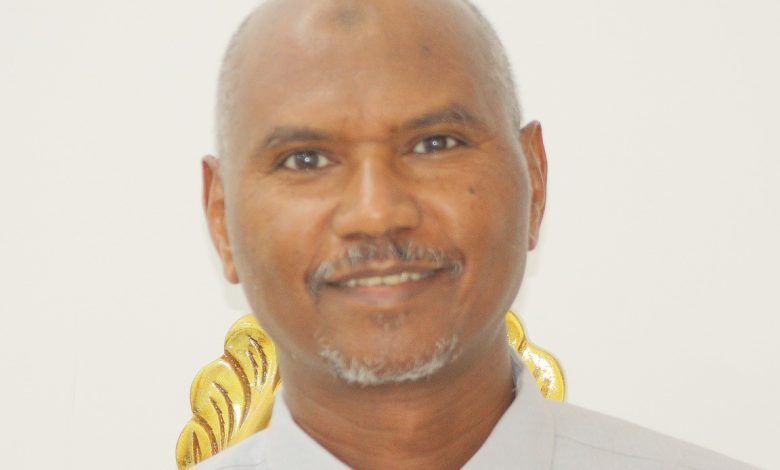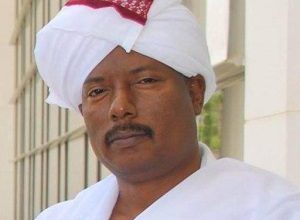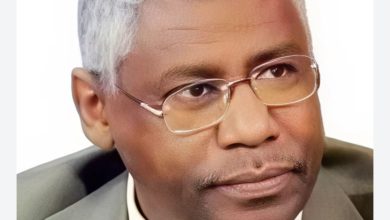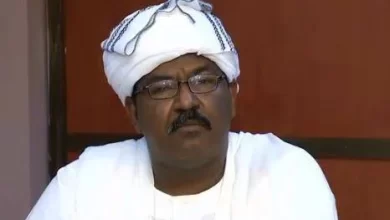Post-war Sudan

By: Al-Sawi Youssef
Economy and development
The current war will change our view of ourselves and change our ways of thinking and working. We hope that it will be the beginning of a complete awakening that will make us turn to work, planning, science and production, instead of nihilistic political conflicts and fanatical and zero-sum political competition, as well as backward and superficial tribal and regional conflicts, and that we turn to relying on ourselves and not waiting for ready-made solutions to come from abroad, as there is no free meal in this world. “Nothing scratches your skin better than your fingernail”.
I will address some aspects of recovery and reconstruction in this series of articles, starting with economic and financial aspects, education reform, societal and cultural aspects, and finally political and administrative reform. We begin by presenting broad outlines about economics and development, which we will elaborate on in the upcoming articles.
International experiences
Singapore rose after its separation from Malaysia, by adopting strategic economic policies, investing in education, especially technical, science, mathematics, and the English language, investing in infrastructure, attracting foreign investment, implementing a strict and resolute political and administrative system led by Lee Kuan Yew, and diversifying the economy (manufacturing, tourism, Logistics center for distribution, petroleum refining, financial services).
(West) Germany rose and rebuilt after the war, through the Marshall Plan, which pumped 1,500 million dollars (equivalent to 15 billion today) by changing the currency, rebuilding heavy industries and infrastructure, and reducing unemployment rates to the point of the need to import labor from Turkey and Morocco.
China rose after the Communist Revolution (1949) by establishing a strong and stable political system that focused on eradicating illiteracy, establishing women’s rights, public education, and primary health care. Then, after 1976, it turned to a comprehensive economic renaissance by focusing on production and export.
As for Malaysia, it developed its economy by exploiting its natural resources, especially rubber and palm oil, in addition to oil and gas, but it attracted huge investments, especially from Japan, in the manufacturing sector (electronics, semiconductors, electrical and household appliances) and adopted policies to eradicate poverty, improve the distribution of wealth, and abolish the system of monopolized economic jobs by race, and witnessed rapid growth, even working to limit the explosive growth that reached 11% per year, with firm political and legislative stability led by Mahathir Mohamad.
We notice from a quick reading of these experiences that they differ depending on the country and its circumstances, but the most important thing that unites them is political stability, some after war and some after revolution or ethnic unrest. But they varied and ranged from promoting education, attracting foreign investment, as in the case of Singapore, exploiting natural resources while attracting investment and beginning the transition to industrialization (Malaysia), re-establishing heavy industries and others with foreign financial assistance, namely Marshall Project loans (Germany), and improving citizens’ lives through improving and disseminating education, health and nutrition, before shifting to a production and export economy (China). We note that all countries needed to attract foreign capital to invest in sectors such as industry, infrastructure, tourism, and services, and they also needed to reform education to keep pace with the requirements of the renaissance and economic growth phase.
Renaissance factors
Hence, we can summarize the factors of economic renaissance in a few basic and important elements:
Political stability, and the absence of wars, ethnic unrest, or labor strikes. It is necessary to establish a system under which people are willing to work, instead of igniting armed rebellions against it, and there must be strict laws that everyone adheres to and to which everyone is subject to its authority.
Paying attention to education, especially scientific and technical education (science, mathematics, and English language), and vocational and technical training to graduate skilled workers, meet market needs, and reduce unemployment.
The abundance of necessary natural resources and geographical features, which are available in the case of Sudan, such as water, agricultural lands, sea beaches, and various minerals.
Availability of capital: In the case of countries with emerging economies, the capital available to them is foreign direct investment, which pumps capital into their economy to establish the necessary infrastructure for production, industry, and services, before the economy can grow and pay its obligations to the foreign investor. This requires the existence of legislation and an environment that encourages, tempts and stimulates investment, with the fight against corruption, nepotism and bureaucracy practiced by government agencies.
Demographic characteristics: They differ depending on the countries. Some of them, like China, have manpower available in huge numbers with high discipline and commitment, and some of them have the technical skill and trained workers, as in Germany and Japan, and some of them have went high in the level of training and quality of their cadres despite the small number, as in Singapore. Sudan combines a reasonable population, where its population pyramid is dominated by young people of working and productive age, and an average educational level in which illiteracy is less than a quarter of the population.
Economic opportunities:
Expanding agriculture, especially wheat (to replace imported ones), oilseeds (groundnuts, sesame, sunflowers), vegetables (tomatoes, onions, tomatoes, okra, etc.), fodder, bananas and lemons, with the aim of meeting the needs of nearby markets in the Gulf and elsewhere. The value of Gulf food imports amounts to about $50 billion annually, including $10 billion for edible oils alone. A study prepared by the Employers Union estimates that investments worth $400 million in agriculture and manufacturing industries could bring a return of $10 billion annually in a few years.
Developing large and integrated tourism projects, including the shores of the Red Sea, archaeological areas in the north (Merowe, Kerma, Al-Bajrawiya, etc.), natural protectorates (Dindir), and deserts in the center and north of the country, because small investments in the field of tourism can bring large returns in hard currencies, easily and sustainably, and it is one of the areas in which our country has comparative advantages that only require good exploitation.
Developing transformational industries related to our production of raw materials, such as the manufacture of edible oils, leather products, cotton ready-made clothes (Bangladesh exports $45 billion worth of ready-made clothes), wooden and metal furniture (to replace imported ones), cane sugar, and food industries such as dairy, cheese, biscuits, pasta, sauce, and juices in addition to other vital industries such as medicines, cement, plastics, paper, packaging materials, fertilizers, soap and detergents. All of this with specifications and quality prepared for export and competition in markets, especially neighboring countries and the region.
Working on to attract foreign capital in various projects and investment sectors, such as establishing infrastructure projects with the BOT system (roads, airports, ports, railways, power stations, real estate, and integrated cities) and in tourism projects (such as hotels, resorts, beaches, tourist villages, amusement and entertainment parks), and in the field of banking and finance, in health and educational services projects, including the establishment of technical institutes, scientific universities, and high-quality hospitals to localize treatment and attract medical tourism from neighboring countries. Investing in quality higher education is a profitable investment not only to graduate qualified personnel but also to attract educational tourism and foreign students. Britain’s income from foreign students reached $54 billion last year. Expenses for treatment abroad for Sudanese are estimated at about 500 million dollars annually, and if citizens of countries such as South Sudan, Chad, Eritrea and others are attracted, Sudan can easily obtain 2-3 billion dollars annually. There are transportation projects, such as airlines, land transport fleets for goods and passengers, free zone projects, and logistics centers linked by railways, in order to serve neighboring closed countries such as Ethiopia, Chad, South Sudan, and Central Africa. Integrated studies are being prepared for these various projects and presented to investors, especially in the countries of Saudi Arabia, Qatar, Kuwait, Turkey, China, Russia, and even European, American and other countries. China has an encouraging investment experience with our country in the field of oil extraction, refining, pipelines, and others.
Expanding technical and vocational training with the aim of preparing young people with the qualifications required in the global labor market, taking into account proficiency in the English language and raising the level of qualification to keep pace with international standards, in the fields of health care (especially nursing and allied medical professions) and in the fields of electricity, construction, heavy machinery, renewable energy, computers and artificial intelligence and the web (designing web applications and pages) and others.
Focusing on youth projects, entrepreneurs’ initiatives, and small and medium Enterprises (SMEs) and providing microfinance, because they are the main engine of the economy even in major countries (they constitute 99 percent of companies in America and employ about half of the workforce, and they constitute 90 percent of Companies in China contribute 70 percent of the gross national product and employ 90 percent of the workforce. Because they accommodate large numbers of the population, they achieve a dual goal: employing the largest number of workers and raising the standard of living, in addition to their important contribution to production and exports.



